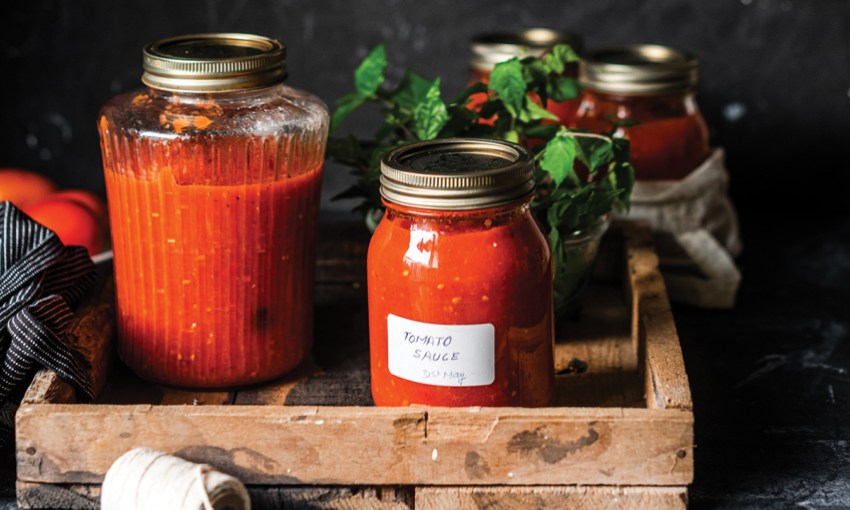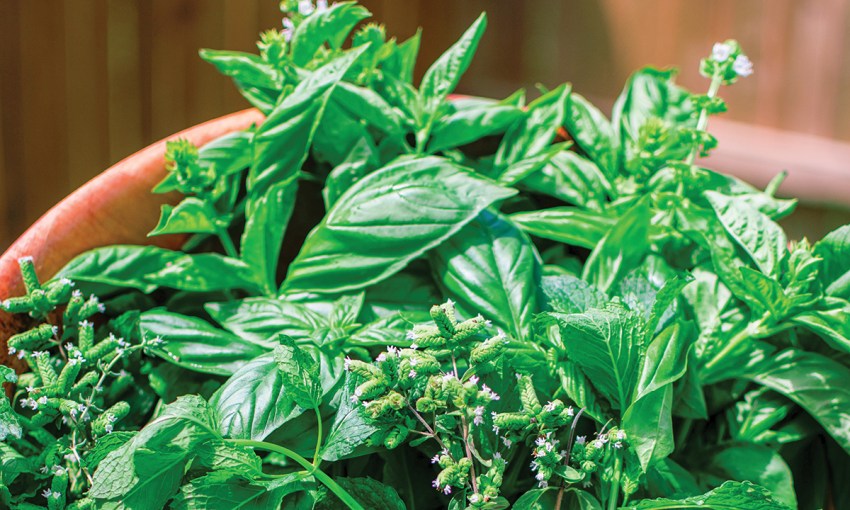To plant, grow and cook with herbs is to partake in a cultural tradition that is as old as Rome. But as the saying goes, Rome wasn’t built in a day.
A taste of Italy
We have much to thank the Roman Empire for – roads, city sanitation, aqueducts … and the vast array of flavoursome herbs which define Italian cooking. The all-conquering Romans brought back new herbs and spices from their campaigns, introducing these big and bold flavours to their daily meals.
While a lull on spicy cuisine fell across all Italian regions during the fasting and abstinence that dominated the Middle Ages, locally sourced herbs and richer foods regained popularity with the new bourgeoisie upper middle class later in that period.
Access to common herbs – either foraged or planted to be used fresh or dried – dramatically enhanced the taste of simple dishes and gave rise to these famous Italian flavours.
Basil
A late spring planting favourite, sweet basil is the most popular and widely grown variety of basil, although other options such as purple, Greek and perennial basil also perform well in the Italian kitchen. Fill up your garden plots, raised beds or just about any container with basil, especially if you love to make pesto. Remove any flower heads as they develop to prevent plants from bolting to seed and slowing down. Just keep harvesting!
Bay
Growing into large trees if left untouched, bay trees are true survivors that tolerate most soil types and positions in sun to part-shade. This slow-growing evergreen tree is easy to keep clipped and shaped, making it a perfect topiary or hedge. Slipping one or two bay leaves into a simmering pot is all it takes to imbue richness to any dish. The ancient Romans adorned winners of competitions with a laurel wreath of bay leaves – a symbol of athletic prowess.
Marjoram
Marjoram is often said to be the missing ingredient in cooking outside of Italy. The plant’s small oval-shaped leaves look similar to oregano but carry a more floral and earthy scent compared with oregano’s distinct spicy one. To help dishes retain this special flavour, fresh marjoram should be added in the last 15 minutes of cooking. Because of its sweetness, marjoram is also suited to desserts like custards and fruit tarts.
Oregano
What better herb to define Italian cuisine than oregano. From pizza toppings to sauces, meat and vegetable dishes, if it’s savoury then oregano is there. Originating in the Greek hillsides, oregano can be found throughout the Mediterranean and its peppery and slightly bitter taste is firmly entrenched in Italian cooking. Keep harvesting and trim off flowers to make plants bushy and full of new growth. Oregano plants can remain productive for many years, just replace them when they lose vigour.
Parsley
Parsley is one of the most popular and easiest-to-grow culinary herbs. Once you plant parsley in the veggie patch, you’ll have handy clusters mysteriously appearing in beds and pots throughout the yard. When it comes to flavour, flat-leafed parsley has the stronger taste for that full-on flavour. Conversely, if you like your flavour mild or want to garnish dishes, go for the curly-leaf parsley. Both are good at masking garlic breath. Keep up the watering over summer and enjoy a year-round crop.
Rosemary
Rosemary is another Italian classic. Just one mere sprig can elevate the flavour of a meat and vegetable dish, soup, stew or other savoury meal. Unlike many herbs which tend to be confined to the veggie garden, rosemary’s ornamental profile sees it used in borders and hedges throughout many yards.
Sage
Easy to grow and undemanding in ground or pot, common sage (Sage officinalis) is an edible salvia that loves the sun and needs watering only as the soil dries. Sage has a multitude of uses, from culinary to medicinal, and as one of the best bee attractors, it is a must in any veggie and herb garden. The greyish leaves can be used fresh or dried to flavour dishes, while sage blooms add a splash of colour and interest to salads.
Thyme
Used in both French and Italian cooking, the beauty of thyme is that once planted, there is little to do apart from the occasional water. It is incredibly tough and the harder it grows, the stronger the flavour. Take care not to cut back plants too much and always leave 10cm on a stem to encourage the next wave of growth. Its nectar-filled flowers are bee magnets in spring. Thyme loves alkaline soils so performs brilliantly in Adelaide.
How to dry
Herbs with low moisture leaves and woody stems such as rosemary, sage, thyme and bay are best suited to drying as they will retain colour and all-important flavour. Cut off long sprigs, tie together and hang in a cool, shaded, and well-ventilated area. Drying times will vary depending on the herb. They are ready once the leaves are crisp and easily crumble. Store in an airtight container.

Italian herb tomato sauce
Ingredients
2 cloves garlic, finely chopped
2 tbsp olive oil
1 large brown onion, finely chopped
2 tbsp dried oregano or half handful fresh, finely chopped
1 bay leaf
2 400gm tins diced tomatoes or 4 cups fresh tomatoes, roughly cut
1 tbsp tomato paste
1 tbsp red wine vinegar
1 tsp dried marjoram or half handful fresh, roughly chopped
1⁄3 cup chopped flat leaf parsley
salt and pepper to taste
Method
Heat olive oil in saucepan over medium heat. Add onion and garlic then sauté until tender. Include all ingredients and let simmer for 15 minutes, stirring regularly. Season with salt and pepper. Cover and chill. Best made a day ahead. Rewarm over medium heat before serving with pasta or over meat and vegetable dishes.
This article first appeared in the 2023 Spring issue of SALIFE Gardens & Outdoor Living magazine.



